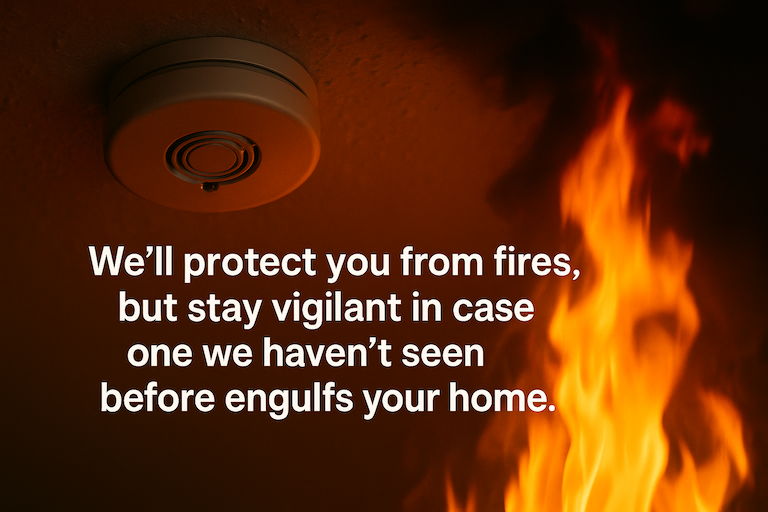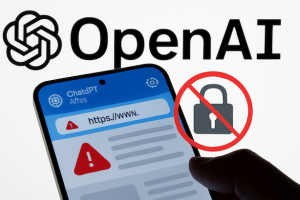Imagine buying a smoke alarm and being told by the company, “We’ll protect you from fires, but stay vigilant in case one we haven’t seen before engulfs your home.”
You’d think they’d lost their minds. Nobody buys a safety device that shifts responsibility back to the user the moment it’s needed most.
And yet, that’s exactly how online security works today.
“Stay vigilant.” “Don’t open suspicious links.”
It’s the modern equivalent of being told to keep sniffing for smoke, just in case your alarm isn’t up to the job.
You’ll hear it from banks, mobile operators, brands, security vendors, and even the media. It’s become the go-to advice for staying safe online – the thoughts and prayers of internet security in 2025.
But doesn’t that advice sound a little strange?
We don’t tell people to stay vigilant when they use a seatbelt or install a smoke alarm. Those systems are built to keep people safe by design. So why, in 2025, are people still told to fend for themselves online?
Why is it normal to be warned to “check suspicious links” instead of expecting the system to verify them for you?
If you’ve ever said, “I never open links from text messages or emails,” ask yourself why that is. You already have layers of security built into your digital life – inside your phone’s operating system, inside apps, inside browsers where links open, and inside the filters that scan your emails. You might also have installed a security solution of some kind yourself. So why don’t you feel safe clicking a link? What does that tell you about how effective today’s security systems really are?
The truth is, it’s not your fault you feel that way. The security industry still relies on detection systems that only act after something’s been identified as dangerous. Databases, AI models, and reputation scores are all built on history. They can’t protect you from something that’s never been seen before.
That’s why you’re still being told to “stay vigilant.” And it’s probably why you tell others to do the same. Because the systems designed to protect people can’t make a clear decision about what’s safe and what’s not, the burden gets passed to the individual instead of the infrastructure.
You wouldn’t accept that logic from a smoke alarm, so why do we accept it online?
Maybe it’s time we stopped treating vigilance as a safety feature, and started demanding technology that actually verifies what’s trustworthy before asking us to trust it.
Should we keep trying to chase millions of new dangerous websites, fake apps, and online impersonations that spin up every day, or start verifying the ones that are legitimate?





